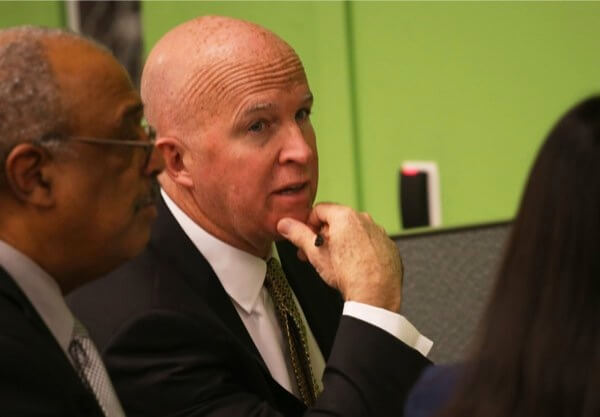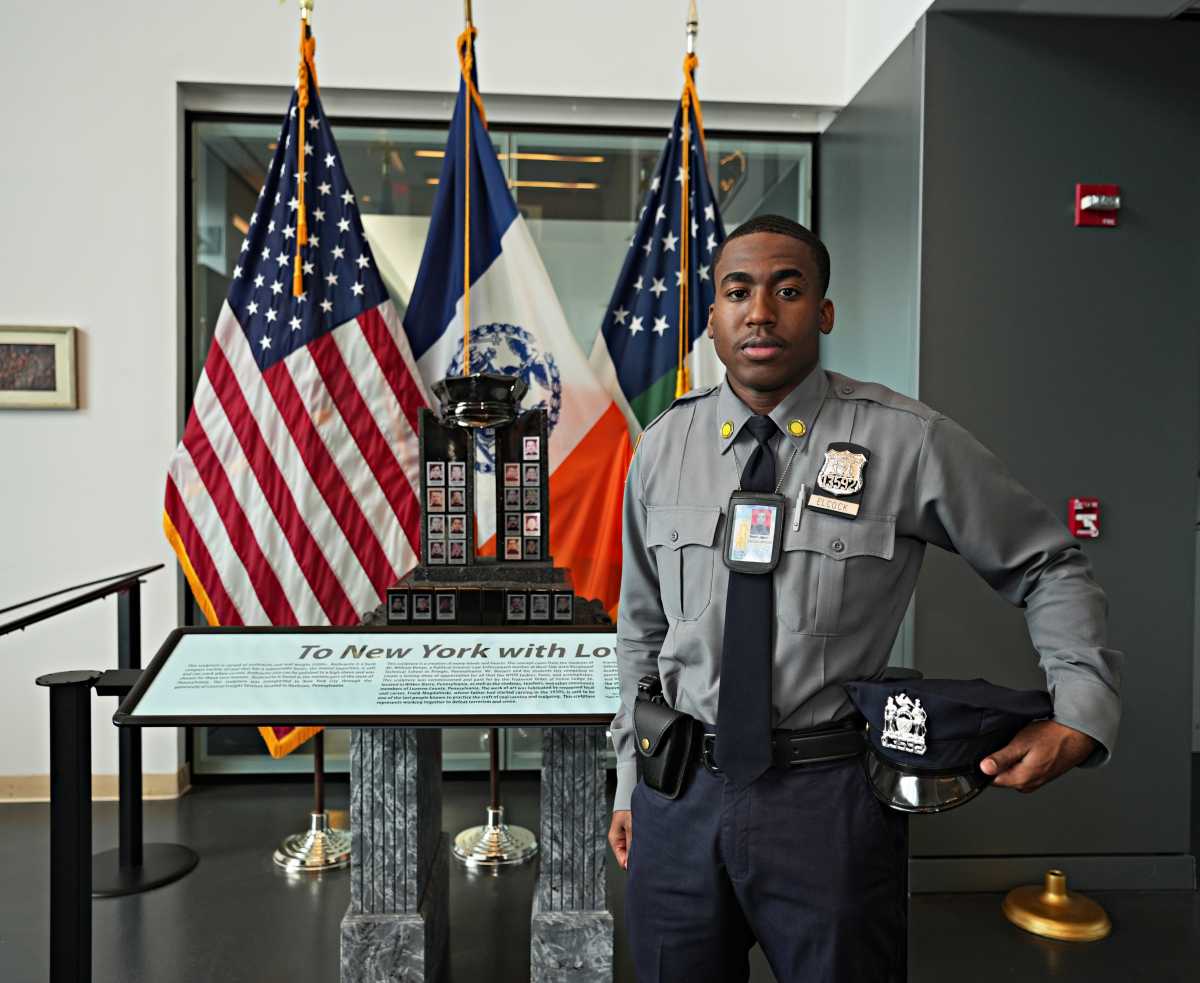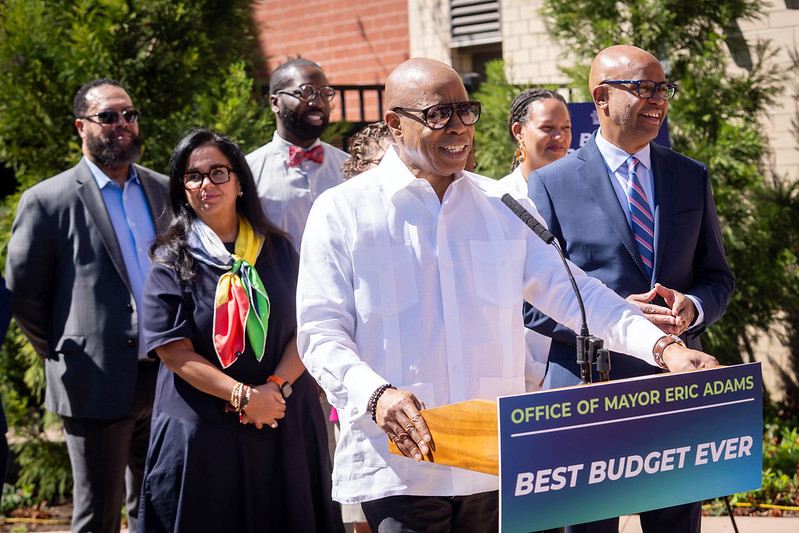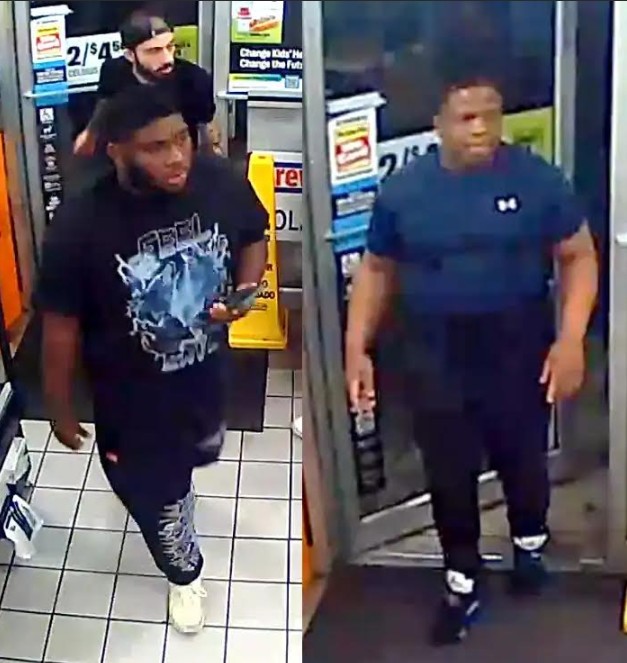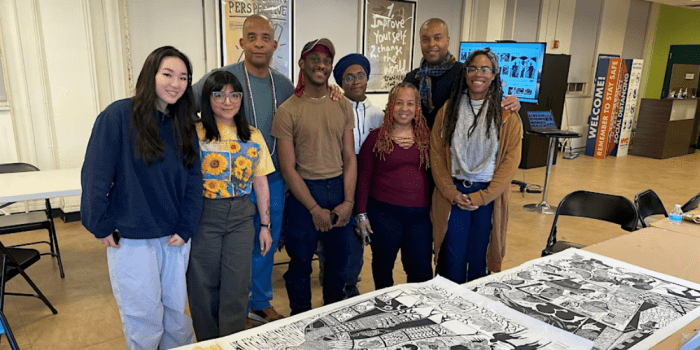By Patrick Donachie
The NYPD announced a continued reduction in crime for the month of September while also touting the extension of the neighborhood policing model into nine new areas, including precincts in Jamaica and Astoria, as well as a housing bureau based out of Flushing.
“There is such enthusiasm about the way this is improving – not only the relationship between police and community – but the effectiveness of our police and the safety of our police,” Mayor Bill de Blasio said during a press conference held with Commissioner James O’Neill and other police brass at One Police Plaza Monday. “They are getting more information than ever before that can stop crimes before they happen, that can help them locate weapons, that can help them locate individuals who aim to do others harm.”
Crime in the seven major categories tracked by police throughout the city has decreased 3 percent this year compared to the same point in 2015, including a 10.9 percent drop in shootings and a 3.7 percent decline in murders during the periods in the respective years. Deputy Commissioner of Operations Dermot Shea said it was the safest September since Compstat, a statistical and analytical model for tracking trends in crime throughout the city and in individual precincts, was first introduced in 1994.
Shea reported the NYPD had made 19,000 arrests for the year, a 7.3 percent reduction from the year before. Felony arrests increased by nearly 5 percent, with Shea saying a reduction in misdemeanor arrests and a sharper focus on criminals who might commit violence had led to the total drop. He also speculated that the focus on people perpetrating violent acts may have led to an increase in assaults on officers, which spiked by 23 percent this year thus far.
By the end of October, 51 percent of the precincts in the city will have incorporated the neighborhood policing model, according to Chief of Department Carlos Gomez, with 44 operational commands around the city applying the practice, which involves giving officers the time and guidance to become better acquainted with the communities they patrol.
In addition to bridging the trust divide between communities and cops, Mayor Bill de Blasio said the approach would help police do their work.
“This is not social work. This is crime fighting,” de Blasio said. “There was too much information that did not reach our officers because there wasn’t a relationship or there wasn’t enough trust.”
In Queens, neighborhood policing was rolled out Monday at the 114th Precinct, which covers parts of Astoria, Long Island City, Woodside and Jackson Heights; at the 103rd Precinct, which includes parts of Jamaica, Hollis and Lakewood; and at Police Service Area 9, a housing bureau that covers northern and southern parts of the borough. Gomez said that in the precincts already utilizing neighborhood policing, overall crime was down 2.8 percent and shootings were down 8 percent.
“We’re getting more information and being more precise,” he said. “We’re targeting the right individuals.”
Turning to the stop, question and frisk practice, which gained renewed focus in the past week due to its prominence in the first presidential debate between Hillary Clinton and Donald Trump, Shea reported the NYPD conducted nearly 9,000 fewer stop-and-frisks than the previous year. To chart the change in the department during the past five years, he pointed to the Brooklyn North patrol borough, where nearly 110,000 stops were performed in 2011.
“Year-to-date is just over 1,000,” he said.
Reach reporter Patrick Donachie by e-mail at pdona

